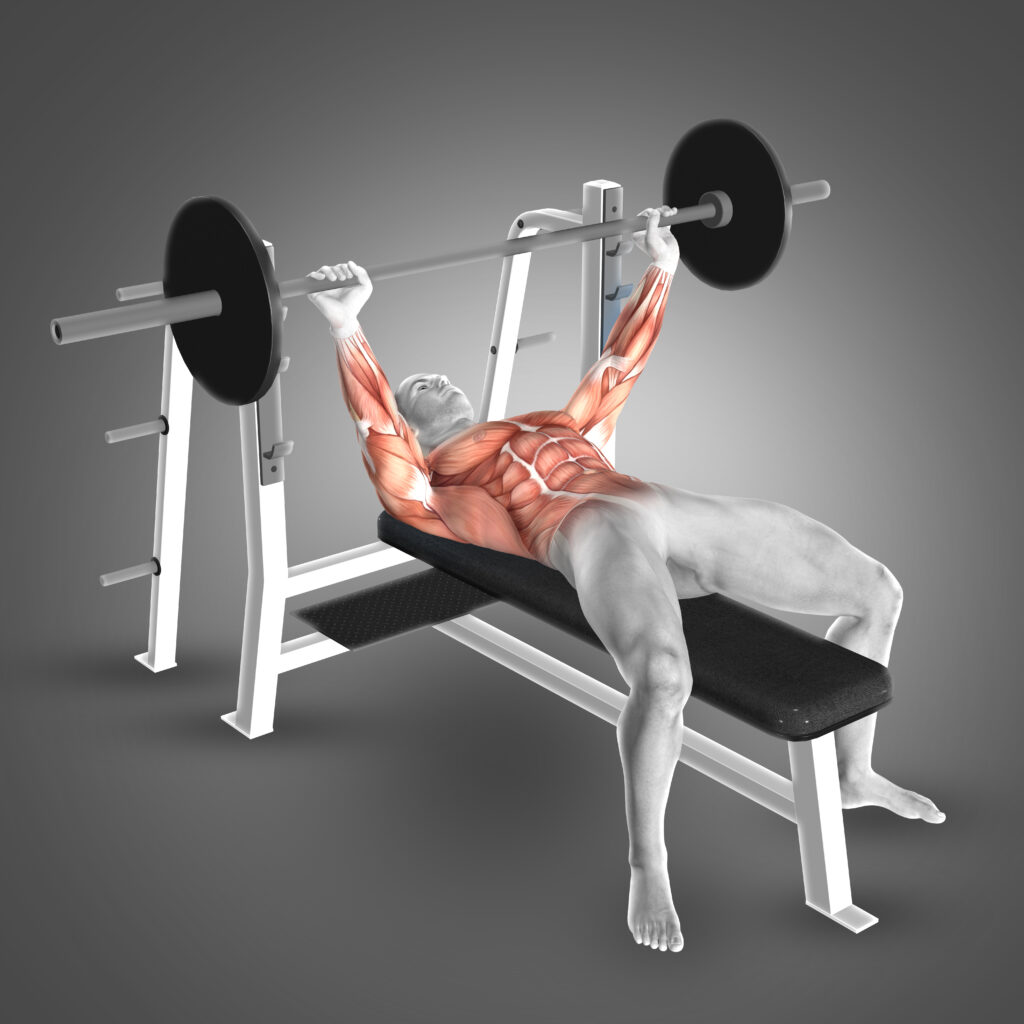Do you know about Building Muscle Strength? Let’s understand what muscle mass is all about. Our bodies are made up of different types of muscles, including skeletal, smooth, and cardiac muscles. Understanding the basics of muscle mass will help you to understand the significance of muscle mass in your body and you may better manage your building muscle strength journey.
Understanding Muscle Strength
The total weight of muscle tissues in your body is referred to as muscle mass and it can be better understood by measurement of the size of the muscle fibers present in muscles. Muscles play a significant role in maintaining your physical health, including your metabolism, body balance, and strength. Muscle building or muscle strength is the major influential factor for athletes and fitness enthusiasts because it’s closely linked with their performance. But as a common man, you must consider your muscle strength as it reflects your overall body health condition.
Importance of Muscle Strength
Building muscle strength is not just related to aesthetics. It is also important for your overall health and well-being. It is crucial for many processes of your body such as increasing bone density, improving your posture, promoting your metabolism, and enhancing your performance as an athlete. In this article, online health point is helping you to explore the advantages of building muscle strength and to discover the ways that muscle strength impacts your body positively. Increasing your muscle strength increases your muscle power and improves your performance in everyday tasks, sports, and weight lifting. Some more advantages are:
Improvement in Metabolism: Building muscle strength boosts your metabolism. The metabolic rate is high in muscle tissues and more calories are burnt. This active metabolism helps you in weight management.
Enhanced Bone Health: Training for physical exercise and muscle-building activities is the best way to promote bone health. Contraction in muscles puts stress on bones that stimulate the bone cells’ activity and in return, an increase in bone density is resulted. This proves beneficial to reduce the risk of osteoporosis and bone fractures in older age.
Improved Insulin Sensitivity: Muscle building helps to improve insulin sensitivity. This means that your body can have the ability to regulate your blood sugar level at a balanced amount on its own as it can use insulin in accurate amounts. Thus the risk of type 2 diabetes can be reduced and overall health can be improved.
Increased Muscle Endurance: Building muscle strength is an effective way to increase muscular endurance. This enables you to perform for longer without getting tired. Athletes use muscle endurance to improve their performance and overall stamina.
Protection Against Age-Related Muscle Loss: As you get older, you naturally lose muscle strength. Resistance training and building muscle strength can help reduce this age-related muscle loss, promoting functional independence and reducing the risk of old age disorders.
Enhanced Mental Well-Being: Incorporating regular strength training and building muscle strength workouts into your daily routine shows positive effects on mental health. It can help reduce the risk factors of getting depressed help to boost self-esteem and can improve cognitive function.
Principles of Building Muscle Strength
Now let’s turn towards the exciting part – the strategies and ways to build muscle strength effectively. It’s time to explore different training methods, including resistance training, strength training, and high-intensity interval training to learn more about the significance of training frequency and progressive overload. You are going to discover the secrets of building muscle strength with your full potential. Several exercises are highly effective for building muscle strength but the best of them are listed below:
Several exercises are highly effective for building muscle strength but the best of them are listed below:
Warm Up to Get Ready: When You prepare yourself to lift heavy weights as a weight lifting exercise, it’s important to warm up your body. You can start it with lighter aerobic activity, lighter weight sets, arm circles, leg kicks, and windmills.
Focus on Posture: Good posture is the surety of successful muscular training but if you don’t care for your posture or form during training, this may lead to muscular failure.
Progressive Overload: Increase the number of repetitions to improve muscle strength. You can easily do it by keeping the weight heavy, around >70% 1 RM, and increasing the number of sets to 2–4. perform compound exercises involving multiple joints, such as the squat and bench press. They offer more bang for your buck than a single muscle or joint involving exercises like knee extensions or bicep curls. Some more exercises are:
Stay Consistent: As these are the total body training workouts so try to perform them two to three times a week and stay consistent. This total body training may be alternated between lower and upper body training.
Seek the Help of Others: Teaming up with a friend to keep each other accountable is an effective method to seek out guidance. You also can get help from a professional personal trainer, to follow a tailored exercise program.
Components of A Muscle-Building Program
Deadlifts: Deadlifts primarily work for the muscles of the posterior chain. The glutes, hamstrings, and lower back are included in deadlifts. They also involve the core and play a crucial role in building overall strength and muscle mass.
Squats: Squats involve multiple muscle groups. These include the quadriceps, hamstrings, and core. It is an amazing compound exercise for overall lower-body muscle development.
Bench Press:  It is referred to as a classic upper-body exercise. It influences the chest, shoulders, and triceps. Effective compound movements are made during these exercises that may help in building muscle strength in the upper body.
It is referred to as a classic upper-body exercise. It influences the chest, shoulders, and triceps. Effective compound movements are made during these exercises that may help in building muscle strength in the upper body.
Overhead Press: It is considered as a shoulder-dominant exercise. It works on the deltoids, triceps, and upper chest. Overhead presses help build muscle strength in the shoulders.
Pull-ups/Chin-ups: Pull-ups and chin-ups are weightlifting exercises that target the muscles of the back, arms, and shoulders. They are useful for building upper-body muscle strength.
Rows: Rows are of different types including bent-over rows and seated rows. They involve the muscles of the upper back. Rhomboids and latissimus dorsi are popular types that are effective for developing a strong and muscular back.
As soon as you start these training sessions you may find more types of workouts. So try to vary your workouts to engage all major groups of body muscles. Gradual increase in weight and resistance is a major rule of progress. Moreover, perform each exercise with its accurate form and posture because this may save you from injury and enhance the beneficial results as well.
Nutrition for Muscle Strength
Spending hours at the gym, lifting heavy weights, and pushing your limits, are common strategies for building muscle strength but without the right fuel your efforts may not prove fruitful i.e if you don’t pay attention to your diet or nutrition, you may not get exact results of your struggle and injury risks also increases.
The major Macronutrients
To enhance your muscle strength or muscle growth, your major task is to manage your calories per day even per meal in the form of macronutrients such as carbohydrates, fats, and protein. These are the main sources of energy for your body muscles and work as fuel to tackle intense training. Protein is the authentic building block of the body and muscles but it also works for repairing and rebuilding the tissues after workouts. Moreover, healthy fats are the main ingredient required for hormone production and your overall health. Try to keep these macronutrients in a balanced form to optimize your muscle strength.
Meal Planning for Muscle Strength Building Do you want to know the game-changer of building muscle strength? Meal planning, yes, eating at regular intervals throughout the day provides your muscles with a steady stream of nutrients/calories. Adopting a structured or planned approach to your meals enables you to hit your muscle-building goal including muscle growth and recovery. This may ensure the great supply of nutrients required for muscle development.
Do you want to know the game-changer of building muscle strength? Meal planning, yes, eating at regular intervals throughout the day provides your muscles with a steady stream of nutrients/calories. Adopting a structured or planned approach to your meals enables you to hit your muscle-building goal including muscle growth and recovery. This may ensure the great supply of nutrients required for muscle development.
Balanced Diet and Its Power for Muscles
A balanced diet resembles a symphony of nutrients that optimizes building muscle growth. Incorporating a variety of foods will help YouTube take in a wide range of micronutrients including antioxidants, minerals, and vitamins. All these micronutrients contribute to muscle strength and promote your overall health. So fill your plate with a variety of fruits, vegetables, healthy fats, whole grains, and lean proteins that are the suitable fuel for your muscle-building journey and play a crucial role in maximizing the desired results.
Enhance Your Diet with Supplements
They play a supportive role in building muscle strength. But you can’t replace supplements with a balanced diet. For instance, you cannot replace protein with protein powder to meet your daily need for protein. Similarly, creatine is a popular supplement for gaining muscle strength but always keep in mind that these supplements are to support your diet and body and not to replace a specific macronutrient of your balanced diet. According to studies, approximately 0.70 grams of protein per pound of your weight may support your muscle growth but the excessive quantity may not be useful for your body and simply excreted through urine.
For example, an average healthy man weighs 150 pounds or 70 kg and can be benefited by using 110 grams of protein per day. So this required protein must come from dairy products, grains, legumes, fish, poultry, or lean meat. Protein supplements such as whey protein, pea, or soy can also be used to maintain the protein amount in the body. So try various sources of protein to optimize your body’s uptake. This will ensure the intake of all types of amino acids into your body—the building blocks of protein and also add variety to your diet.
Remember that all the above-mentioned recommendations need a stimulus like adequate exercise to be worth the increased intake. So be careful while taking this amount of protein because taking protein without exercising daily will prove harmful to your muscles and overall health. People who exercise less intensity workout just need 0.35 grams per pound of their body weight per day. So if you have a desire to get enough protein, you must enjoy a balanced diet and add high-quality carbohydrates such as vegetables, fruits with fiber, and whole grains that are rich in vitamins and minerals. Besides working on your balanced diet, incorporating intense workouts into your routine life will help you to prevent diseases and benefit your overall health.
Recovery and Rest
Rest and recovery are two major factors that influence building muscle strength. Besides rest and recovery, proper sleep and recovery techniques for injuries are incredibly significant. So always remember that rest and recovery will be helpful for you because you can avoid burnout, prevent injuries, and maximize your required results in building muscle strength. Learning how to listen to your body and fulfill its needs will support your muscle growth. Both Rest and recovery are absolutely important for building muscle mass. It might sound counter-intuitive, but taking rest helps muscles grow bigger and longer. Let’s understand why rest and recovery are super crucial for your building muscle strength journey.
Repair and Growth: Lifting weights may create tiny tears in your muscle fibers. Rest and recovery periods boost your body to repair muscles. This is the way through which you may lead to muscle growth and increase their strength. So, avoid hitting the gym every day, and make sure to incorporate rest periods into your routine. This gives your muscles time to heal and get stronger.
Avoid Overtraining: Performing too hard workouts can lead to overtraining. Not getting enough time for the body to recover or taking rest is a worse form of overtraining that causes fatigue, increases the risk of injuries, and decreases your performance. Incorporating proper rest days will ensure recharging your body and prevent overtraining.
Hormonal Balance: Rest is the major factor in maintaining hormonal balance in your body. During periods of rest, your body releases some growth hormones, including testosterone and human growth hormone (HGH), that promote muscle growth and repair. So, a regular rest period and a sound sleep pattern play a vital role in activating your hormone levels and muscle-building ability.
Conclusion Dedication, consistency, and a positive mindset are the requirements of a muscle-building program because they integrate muscle-building habits into your daily routine. This may be done through setting goals, overcoming challenges, and staying motivated. Incorporating healthy lifestyle changes will support building muscle and unleash the potential within you. Different training workouts have a variety of frequencies, optimal levels of reps, sets, and rest intervals so use them according to instructions and guidelines from professional experts. They will guide you better on what suits your body and lifestyle and how to adjust them.
Dedication, consistency, and a positive mindset are the requirements of a muscle-building program because they integrate muscle-building habits into your daily routine. This may be done through setting goals, overcoming challenges, and staying motivated. Incorporating healthy lifestyle changes will support building muscle and unleash the potential within you. Different training workouts have a variety of frequencies, optimal levels of reps, sets, and rest intervals so use them according to instructions and guidelines from professional experts. They will guide you better on what suits your body and lifestyle and how to adjust them.
In addition, your building muscle strength journey also requires a balanced diet with high protein content. Last, but not least a happy training also plays a crucial role.







